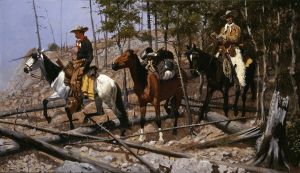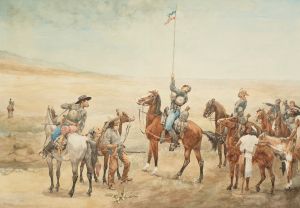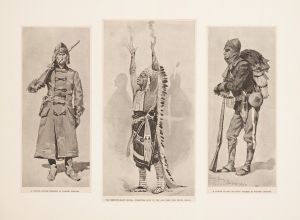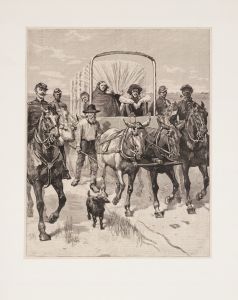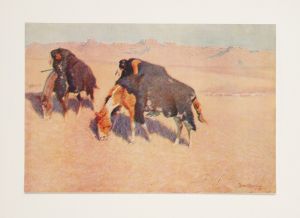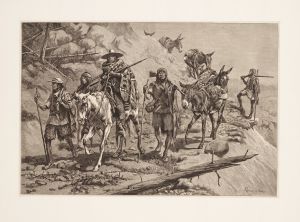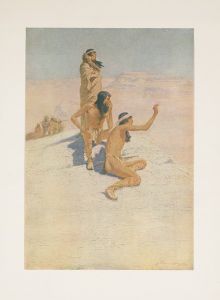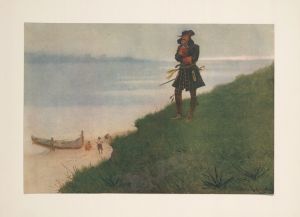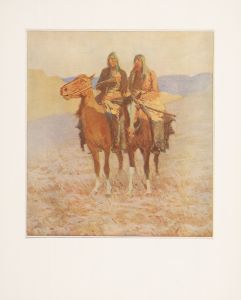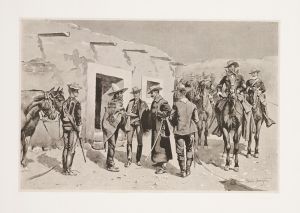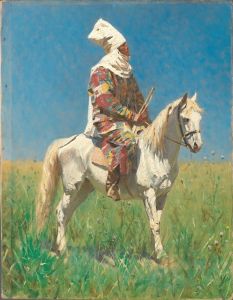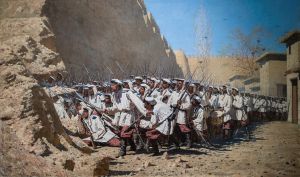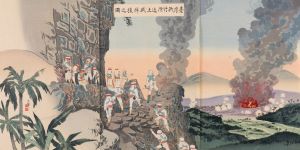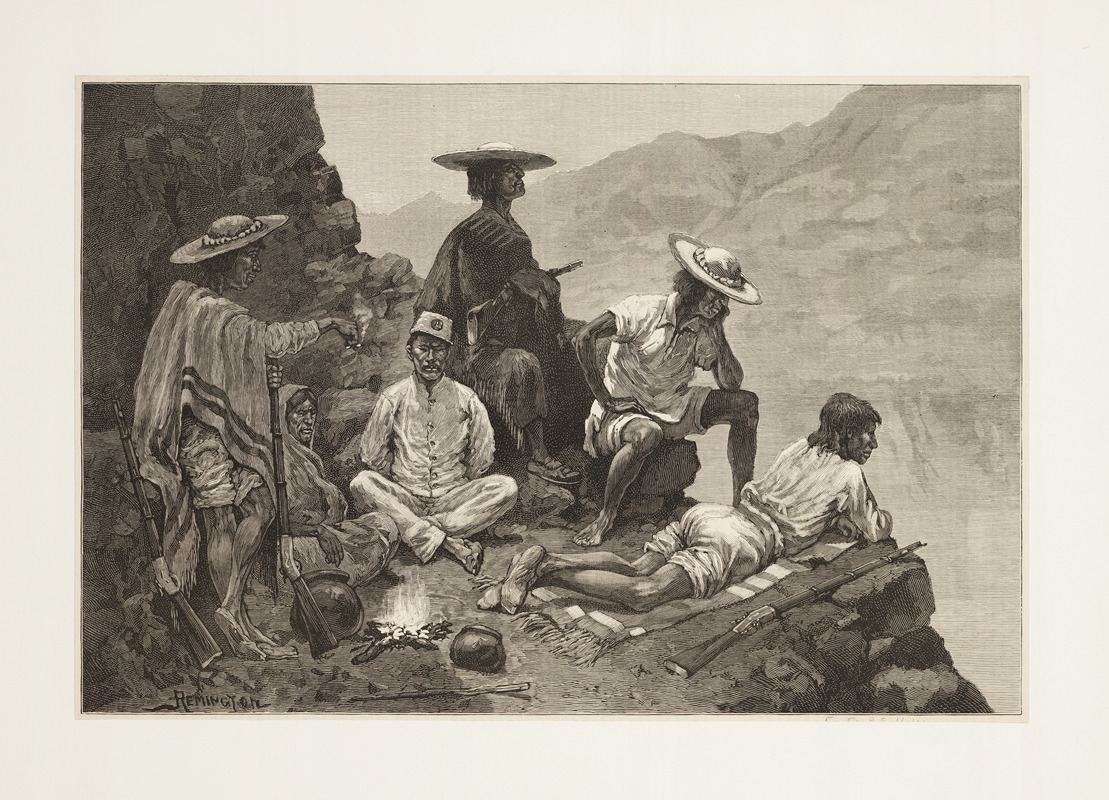
Yaqui Indian refugees with captive Mexican soldier
A hand-painted replica of Frederic Remington’s masterpiece Yaqui Indian refugees with captive Mexican soldier, meticulously crafted by professional artists to capture the true essence of the original. Each piece is created with museum-quality canvas and rare mineral pigments, carefully painted by experienced artists with delicate brushstrokes and rich, layered colors to perfectly recreate the texture of the original artwork. Unlike machine-printed reproductions, this hand-painted version brings the painting to life, infused with the artist’s emotions and skill in every stroke. Whether for personal collection or home decoration, it instantly elevates the artistic atmosphere of any space.
Frederic Remington's painting Yaqui Indian Refugees with Captive Mexican Soldier is a work that reflects the artist's interest in the American West and the conflicts that shaped its history. Created in 1893, the painting depicts a group of Yaqui Indigenous people, who are shown escorting a captive Mexican soldier. The scene captures a moment of tension and cultural conflict, characteristic of the struggles between Indigenous groups and the Mexican government during the late 19th century.
The Yaqui people, native to the Sonoran Desert region of present-day Mexico and the southwestern United States, faced significant persecution during this period. The Mexican government, under leaders such as Porfirio Díaz, sought to suppress the Yaqui through military campaigns and forced relocations, often referred to as the "Yaqui Wars." These efforts were part of a broader strategy to assimilate Indigenous populations and seize their lands for economic development. Many Yaqui resisted these policies, leading to violent confrontations and the displacement of their communities.
Remington, known for his depictions of the American frontier, was not a direct witness to the events involving the Yaqui people but drew inspiration from reports, photographs, and his travels in the region. His works often romanticized or dramatized scenes of conflict and survival, appealing to the popular imagination of his time. In this painting, the Yaqui refugees are portrayed with a sense of resilience and determination, while the captive soldier symbolizes the broader power struggles of the era.
The painting is notable for its composition and use of color, which emphasize the harsh desert environment and the isolation of the figures. Remington's attention to detail in the clothing and weaponry of the subjects reflects his effort to achieve a degree of authenticity, though his perspective was shaped by the biases and cultural attitudes of his time.
Today, Yaqui Indian Refugees with Captive Mexican Soldier is recognized as an important example of Remington's work and a visual representation of a complex historical moment. It serves as a reminder of the struggles faced by the Yaqui people and the broader impact of colonial and governmental policies on Indigenous communities in the Americas.





